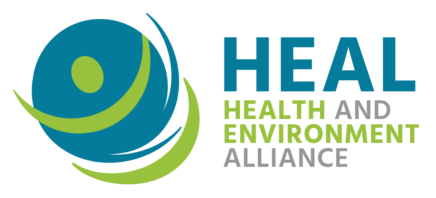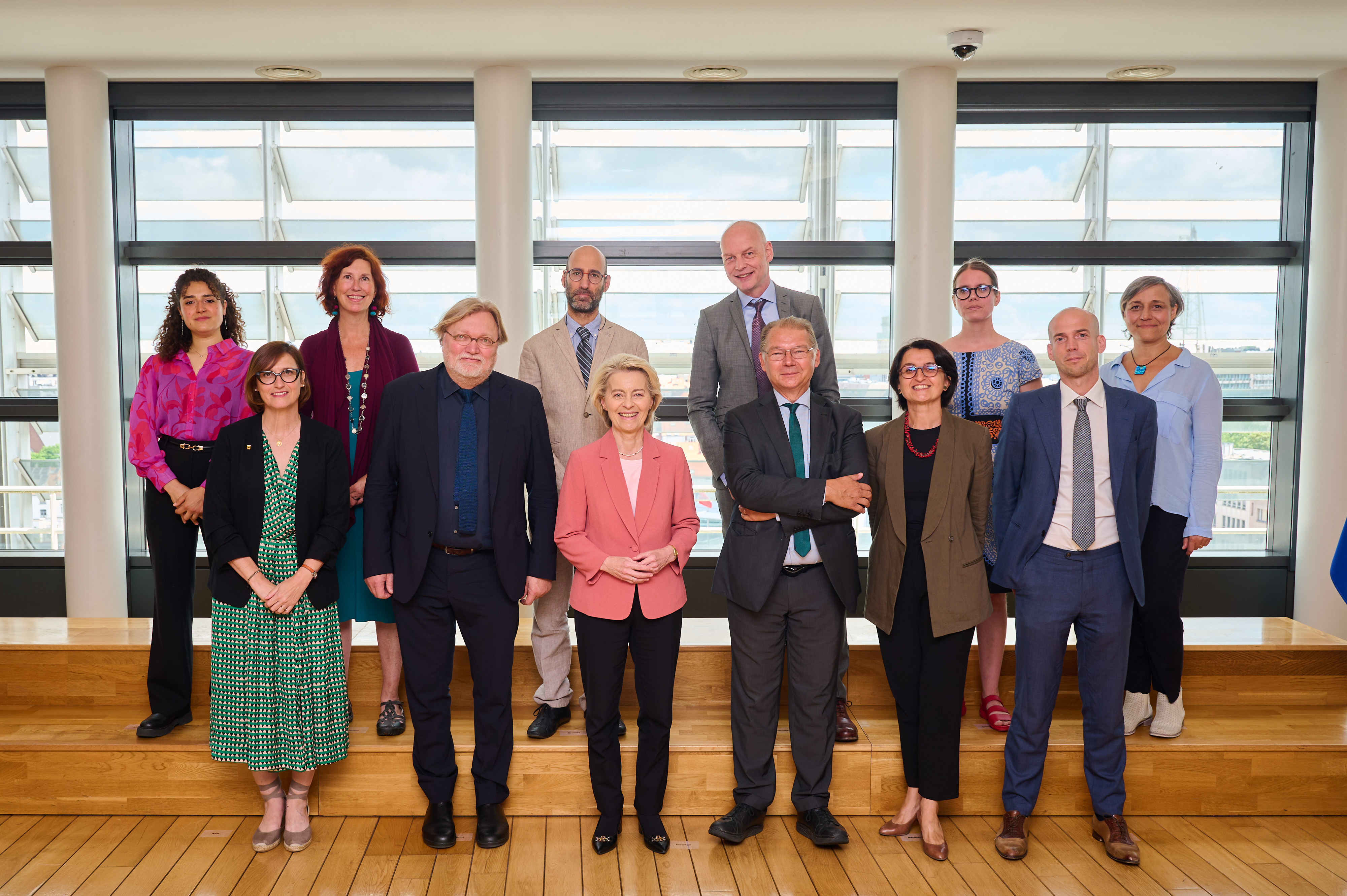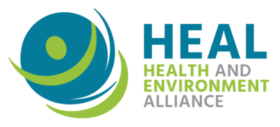Today, together with members PAN Europe and WECF, HEAL’s Executive Director Génon Jensen participated in the Implementation Dialogue on Biocides hosted by the EU Health Commissioner Várhelyi.
The Health and Environment Alliance (HEAL) has joined a coalition of 73 NGOs and The World Alliance for Mercury-Free Dentistry to urge the UN Environment Executive Director to co-sponsor a global workshop on ending amalgam use for children.
L’Alliance Mondiale pour une Dentisterie Sans Mercure
التحالف العالمي لطب أسنان خال من الزئبق
Всемирный альянс за стоматологию без ртути
Alianza Mundial por una Odontología Libre de Mercurio
世界无汞牙科联盟
World Alliance for Mercury-Free Dentistry
The Honorable Erik Solheim, Executive Director
UN Environment
Nairobi
Dear Executive Director Solheim:
The World Alliance for Mercury-Free Dentistry deeply appreciates your 25 May meeting with Charlie Brown and Rachel Kamande, as well as with Desiree Narvaez and Hao Chen (and afterwards with Michiko Okumura) of UN Environment. At the end of that meeting you asked Charlie what you could do. After consulting with CSOs on every continent, here is our request for the single most effective step UN Environment can take to address Annex A-II of the Minamata Convention on Mercury.
We ask that UN Environment join us to co-sponsor a global workshop on ending amalgam use for children. This recommendation comes from 73 CSOs (listed below), a majority of which are African and Asian. We CSOs come from 47 nations.
Why focus on ending amalgam use in children? For five main reasons:
1. Children are particularly vulnerable to mercury: Children’s developing brains and neurological systems are especially susceptible to the neurotoxic effects of mercury. The Minamata Convention acknowledges that parties are “Aware of the health concerns, especially in developing countries, resulting from exposure to mercury of vulnerable populations, especially women, children, and, through them, future generations.” [i] Therefore, it is appropriate to focus on preventing both direct and indirect mercury exposures to this most vulnerable population.
2. Mercury-free alternatives are available for children’s teeth: It is widely accepted that mercury-free fillings are available for children’s teeth. The World Health Organization report Future Use of Materials for Dental Restoration explains, “Alternative restorative materials of sufficient quality are available for use in the deciduous [milk] dentition of children.”[ii] Between the irrelevancy of filling longevity in short-lived primary teeth[iii] and amalgam’s higher failure rates in such teeth,[iv] justification for amalgam for children no longer exists. In our experience, even many dentists who believe amalgam use may need to continue a little longer for adults agree that it should be stopped for children.
3. Ending amalgam use in children is a proven phase down step: Ending or restricting amalgam use in children has proven to be an important intermediate step in nations that have successfully phased down – or phased out – amalgam use. As described in the UN Environment brochure Lessons from Countries Phasing Down Dental Amalgam Use[v], Norway and Sweden “started with a recommendation against the use of amalgam for vulnerable populations such as children and pregnant women….Amalgam use in Danish children was restricted in 2003…. In the Netherlands, amalgam use has declined significantly in children and adults after it was discouraged in children….In Finland, national guidelines recommend that amalgam should not be used in pregnant women and children.”[vi] The entire European Union bans amalgam use for children under age 15 (effective 1 July 2018) and Mauritius has called on its dentists to stop amalgam use in children.[vii]
4. Many developing nations support this step and want guidance: Ending amalgam use for children is a phase down step that since 2012 has received strong support from people in developing nations – from the Africa Region’s landmark proposal during the INCs . . . to African CSOs’ Abuja Declaration for Mercury-Free Dentistry in Africa[viii] . . . to the NGO-led Dhaka Declaration for Mercury-Free Dentistry for Asia[ix] . . . to the Nigerian government’s new consumer brochure on amalgam. In the 21st century, many developing countries in Africa and Asia are leapfrogging past dead 20th century technologies such as landline telephones and branch banking – and they can do the same with amalgam. The workshop would provide guidance and experience-sharing that would help these nations protect their children, just as so many developing nations are protecting their own from this unnecessary source of mercury exposure.
5. This step will spur the private sector to transition to mercury-free fillings: Ending amalgam use in children will spur local manufacturers and suppliers in developing nations to shift to selling more mercury-free fillings to fulfill the new need. It will also discourage foreign manufacturers and suppliers from dumping their mercury products in developing nations – a contemptible environmental injustice. The major Indian business daily Financial Chronicle published an editorial by Satish Sinha of Toxics Link, “Let’s Get Rid of Mercury,” which calls for such a domestic industry to begin in India forthwith.
Regarding logistics for such a workshop, we propose the following:
• Location: Please consider Dhaka or Delhi as the location for this workshop. These Indian Subcontinent capital cities represent the largest consumer market in the world; both are home to grassroots movements advocating the transition to mercury-free dentistry and working to build local industry in mercury-free alternatives. An alternative is to have the conference at UN Environment’s headquarters in Nairobi.
• Participants: We would invite governments, UN Environment and other international agencies, NGOs, dental school deans, practicing dentists, and dental material manufacturers.
• Agenda: The workshop could feature speakers discussing, e.g., (a) mercury’s particularly devastating impact on children; (b) technical advantages of mercury-free alternatives for children; (c) case studies from countries that restricted amalgam in children; (d) case studies from government programs that ended amalgam use in children; (e) dental schools that promote mercury-free dentistry in children; (f) systems to provide mercury-free dentistry to low-income children; (g) steps to promote manufacturers selling mercury-free materials for use in children.
We salute you for being the first minister to end amalgam use in a country. We look forward to continuing our long working relationship with our esteemed UN Environment colleagues to phase down amalgam use worldwide.
21 June 2017
Cordially yours,
World Alliance for Mercury-Free Dentistry
+ 73 Civil Society Organizations with their leaders.
cc—Chair of the Bureau, the Secretariat, Special Assistants to the Director, and UN Environment offices in Bangkok, Geneva, Nairobi, and Panama City; cc—Executive Committee of World Alliance
Africa (26)
Dominique Bally Kpokro, Centre Africain pour la Santé Environnementale (African-wide)
Leslie Adogame, Sustainable Research and Action for Environmental Development (Nigeria)
Dorah Swai, AGENDA for Environment and Responsible Development (Tanzania)
Dr. Gilbert Kuepouo, Centre de Recherche et d’Education pour le Développement (Cameroun)
Hemsing Hurrynag, Pesticide Action Network – Mauritius (Mauritius)
Dr. Najoua Bouraoui, Association pour la Protection de l’Environnement et le Developpement Durable de Bizerte (Tunisia)
Emmanuel Odjam-Akumatey, Ecological Restorations (Ghana)
Griffins Ochieng, Centre for Environment Justice and Development (Kenya)
Ndeye Maimouna Diene, Pesticide Action Network Africa (Senegal)
Tom Aneni, Sustainable Environment Development Initiative (Nigeria)
Adetonah Sounkoura, GAPROFFA (Benin)
Semia Gharbi, Association de l’Education Environnementale pour les Futures Générations (Tunisia)
Ibrahima Sory Sylla, Carbone Guinéé (Guinea)
Nshimirima Jean Donatien , Propreté Environnement et Santé (Burundi)
Moussa Hassan Ousseini, Jeunes Volontaires pour l’Environnement du Niger (Niger)
Bernard Elia Kihiyo, Tanzania Consumer Advocacy Society (Tanzania)
Amegadze Kokou Elorm, Les Amis de la Terre-Togo (Togo)
Robert Tumwesigye Baganda, Pro-biodiversity Conservationists in Uganda (Uganda)
Daniel Maina, Eco Ethics Kenya (Kenya)
Solomon Kusi Ampofo, Friends of the Nation (Ghana)
Dr. Tadesse Amera, Pesticide Action Network-Ethiopia (Ethiopia)
Fatima Siddiki, Centre Optionnel pour la Promotion et la Régénération
Economique et Sociale Secteur Afrique (Cameroun)
Lucy Mulenkei, Indigenous Information Network (Kenya)
Charles Baimey, Jeunes Volontaires pour l’Environnement-Côte d’Ivoire (Côte d’Ivoire)
Dr Eugène Loubaki, Action sur l’Environnement et le Développement Congo (Congo-Brazzaville)
Becha Hadley, Community Action for Nature Conservation (Kenya)
Asia/Pacific (17)
Siddika Sultana, Asian Center for Environmental Health (Asian-wide)
Satish Sinha, Toxics Link (India)
Gao Xiaoyi , All China Environment Federation (China)
Dr. Eng. Naji Kodeih, IndyACT (Lebanon)
Dr. Shahriar Hossain, Environment & Social Development Organisation (Bangladesh)
Aileen Lucero, Ecowaste Coalition (Philippines)
Dillip Pattanaik, National Alliance for Mercury Free Dentistry (India)
Yuyun Ismawati, BaliFokus Foundation (Indonesia)
Dr. Mahmood A. Khwaja , Sustainable Development Policy Institute (Pakistan)
Ziyad Al-Alawneh, Land and Human to Advocate Progress (Jordan)
Ram Charitra Sah, Center for Public Health and Environmental Development (Nepal)
Dr Lillian Lasaten-Ebuen, IAOMT Philippines (Philippines)
Lien To, Center for Community Health and Injury Prevention (Vietnam)
Richard Gutierrez, BAN Toxics (Philippines)
Eng. Marie Thérèse Merhej Seif, Human Environmental Association for Development (Lebanon)
Sonia Mendoza, Mother Earth Foundation (Philippines)
Juliet Pratt, Vice President Oceania-World Alliance for Mercury-free Dentistry (New Zealand)
Europe (16)
Genon Jensen, Health and Environment Alliance (European-wide)
Johanna Hausmann, Women Engage for A Common Future (European-wide)
Geoffrey Begon, Non au Mercure (France)
Florian Schulze, Gesellschaft für Schwermetalltoxikologie (Germany)
Francesca Romana Orlando, L’Associazione Malattie da Intossicazione Cronica e/o Ambientale (Italy)
Hanna Schudy and Radosław Gawlik, EKO-UNIA (Poland)
Graeme Munro-Hall, IAOMT-Europe (U.K.)
Leticia Baselga, Ecologistas en Acción (Spain)
Bruno van Peteghem, Association Toxicologie-Chimie de Paris (France)
Dr. Bent Christiansen, Danish Society of Orthomolecular Medicine (Denmark)
Dr. Elena Manvelyan, Armenian Women for Health and Healthy Environment (Armenia)
Ann-Marie Lidmark, Tandvårdsskadeförbundet – The Swedish Association of Mercury Patients (Sweden)
Susana Fonseca, ZERO – Associação Sistema Terrestre Sustentável (Portugal)
Karolína Brabcová, Arnika – the Toxics and Waste Programme (Czech Republic)
Cynthia Bagchi, Bedford Allergy Group (U.K.)
Trine Jørgensen, Foreningen mod Skadeligt Dentalmateriale (Denmark)
The Americas (11)
María Isabel Cárcamo, Centro Latinoamericano de Salud Ambiental (Latin American-wide)
Sylvia Dove, Consumers for Dental Choice (USA)
Fernando Bejarano, Centro de Análisis y Acción en Tóxicos y sus Alternativas (México)
Zuleica Nycz, TOXISPHERA-Environmental Health Association (Brazil)
Michael Bender, Mercury Policy Project (USA)
Mario Paredes, Alter Vida (Paraguay)
Anna Tilman, Watershed Sentinel Educational Society (Canada)
Hassan Sohn APROMAC-Environment Protection Association (Brazil)
Sharon E. Lewis, Connecticut Coalition for Environmental Justice (USA)
Darree Sicher, United Sludge Free Alliance (USA)
Lidia Lucaski, AMAR-Environment Defense Association (Brazil)
Indigenous Peoples
Rochelle Diver, International Indian Treaty Council
Worldwide
Olga Speranskaya and Pamela Miller, Co-Chairs, IPEN
Charlie Brown, World Alliance for Mercury-Free Dentistry
References:
[i] Minamata Convention on Mercury (2013), http://mercuryconvention.org/Portal… [ii] World Health Organization, FUT URE USE OF MATERIALS FOR DENTAL RESTORATION (2011),http://www.who.int/oral_health/publ…, p.35 [iii] BIO Intelligence Service (2012), Study on the potential for reducing mercury pollution from dental amalgam and batteries, Final report prepared for the European Commission-DG ENV, http://ec.europa.eu/environment/che…, p.69 (In 2012, the European Commission’s independent consultant elaborated that “With regard to young children, longevity of the restoration is not a relevant concern since baby teeth will fall out long before the restoration fails.”) [iv] Reinhard Hickel et al., Longevity of occlusally-stressed restorations in posterior primary teeth, AMERICAN JOURNAL OF DENTISTRY, Vol. 18, No. 3, June 2005, http://www.amjdent.com/Archive/2005… (Hickel et. al. found that amalgam has a mean annual failure rate of 7.6% in children’s primary teeth, meaning almost one amalgam filling in 12 fails in young children. This high 7.6% failure rates contrasts with 5.9% for composite and 3.3% for compomer, and with only 4.2% for resin-modified glass ionomer.) [v] http://www.zoinet.org/web/sites/def… [vi] UNEP, Lessons from Countries Phasing Down Dental Amalgam Use (2016), http://www.zoinet.org/web/sites/def…, p.21 [vii] Inventory of Mercury Releases in Mauritius (2014), http://health.govmu.org/English/Dep…).pdf, p. 19. [viii] https://mercuryfreedentistry.files…. [ix] http://cephed.org.np/pdf/31421052006.pdf

